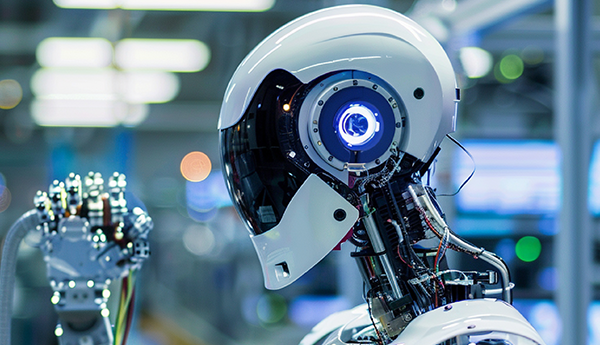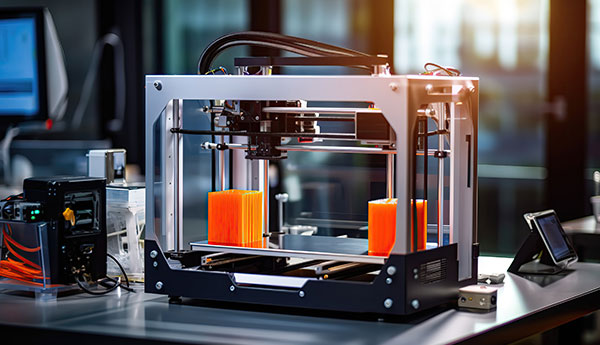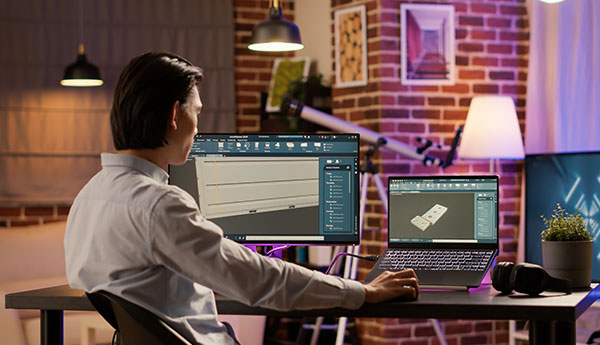

3D Printed Design
3D printing, also known as additive manufacturing, is a revolutionary technology that creates three-dimensional objects by adding material layer by layer. This innovative process allows for the creation of complex geometries that would be difficult or impossible to achieve with traditional manufacturing methods. 3D printing has rapidly evolved and is now utilized in various industries, including healthcare, aerospace, automotive, and consumer goods.
How 3D Printing Works
Basic Principles
- Design Creation:The 3D printing process begins with the creation of a digital 3D model using computer-aided design (CAD) software. This model serves as a blueprint for the object to be printed.
- Slicing:The 3D model is then sliced into thin, horizontal layers using specialized software. Each slice represents a cross-section of the object, which the printer will create sequentially.
- Printing:The 3D printer reads the sliced file and deposits material layer by layer to build the object from the bottom up. This process continues until the entire object is formed.
- Post-Processing:After printing, the object may require post-processing steps such as cleaning, curing, or finishing to achieve the desired surface quality and mechanical properties.
Types of 3D Printing Technologies
- Fused Deposition Modeling (FDM):
- Process:FDM printers use a heated nozzle to extrude thermoplastic filaments, which solidify upon cooling.
- Materials:PLA, ABS, PETG, and other thermoplastics.
- Applications:Prototyping, hobbyist projects, and functional parts.
- Stereolithography (SLA):
- Process:SLA printers use a laser to cure liquid resin into solid layers, building the object layer by layer.
- Materials:Photopolymer resins.
- Applications:High-precision prototypes, dental models, and jewelry.
- Selective Laser Sintering (SLS):
- Process:SLS printers use a laser to sinter powdered material, fusing it into solid layers.
- Materials:Nylon, polyamides, and metal powders.
- Applications:Functional parts, complex geometries, and low-volume production.
- Digital Light Processing (DLP):
- Process:DLP printers use a digital light projector to cure liquid resin layer by layer.
- Materials:Photopolymer resins.
- Applications:Detailed models, dental applications, and jewelry.
- Metal 3D Printing:
- Process:Techniques like Direct Metal Laser Sintering (DMLS) and Electron Beam Melting (EBM) are used to create metal parts.
- Materials:Titanium, aluminum, stainless steel, and other metal alloys.
- Applications:Aerospace components, medical implants, and automotive parts.

Applications of 3D Printing
1. Healthcare
- Prosthetics and Orthotics:Custom-fit prosthetics and orthotic devices enhance patient comfort and functionality.
- Medical Models:Anatomical models for surgical planning and training.
- Bioprinting:Emerging technology aiming to print living tissues and organs for transplantation.
2. Aerospace and Automotive
- Lightweight Components:3D printing enables the production of lightweight and complex parts for aircraft and vehicles.
- Prototyping:Rapid prototyping for design validation and testing.
- Spare Parts:On-demand production of spare parts reduces inventory and lead times.
3. Consumer Goods
- Customized Products:Personalized products such as jewelry, eyewear, and fashion accessories.
- Household Items:Functional and decorative items for home use.
- Toys and Models:Custom toys and collectible models.
4. Construction
- Building Components:3D printing of concrete and other materials for constructing walls, columns, and structures.
- Affordable Housing:Creating cost-effective and sustainable housing solutions.
5. Education and Research
- Learning Tools:Models and teaching aids for enhanced learning experiences.
- Research Prototypes:Creating prototypes for scientific research and experimentation.
Benefits of 3D Printing
- Design Flexibility:Ability to create complex geometries and customized designs.
- Rapid Prototyping:Accelerates the product development process by allowing quick iteration and testing.
- Reduced Waste:Additive manufacturing produces less waste compared to subtractive methods.
- Cost-Effective Production:Economical for low-volume production and customized parts.
- On-Demand Manufacturing:Enables just-in-time production, reducing inventory and storage costs.





